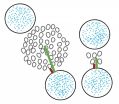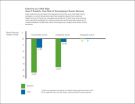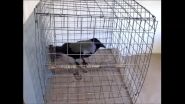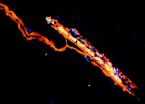(Press-News.org) This news release is available in Japanese.
Behind all motor, sensory and memory functions, calcium ions are in the brain, making those functions possible. Yet neuroscientists do not entirely understand how fast calcium ions reach their targets inside neurons, and how that timing changes neural signaling. Researchers at the Okinawa Institute of Science and Technology Graduate University have determined how the distance from calcium channels to calcium sensors on vesicles affects a neuron's signaling precision and efficacy. In international collaboration with research institutes such as the Pasteur Institute and the Institute of Science and Technology Austria, Professor Tomoyuki Takahashi and the Cellular and Molecular Synaptic Function Unit described the locations of voltage-gated calcium channels, which allow calcium ions to enter into the neuron, triggering vesicles to release neurotransmitters, signaling to the next neuron. This research, to be published the January 7, 2015 issue of Neuron, illuminates decades of mystery behind the precision and efficacy of neurotransmitter release, suggesting how signaling changes as an animal matures.
After an electrical spike, or an instantaneous change in voltage, travels through the neuron, it reaches the presynaptic terminal. The presynaptic terminal is an area facing the synaptic cleft, or the gap between one neuron and the next. The electrical spike triggers voltage-gated calcium channels to open, allowing calcium ions to enter the presynaptic terminal. The calcium ions then diffuse locally around the channels and encounter synaptic vesicles, small packages of neurotransmitters, which are signaling molecules. The calcium ions interact with sensor proteins on the vesicle, triggering the vesicles to fuse with the presynaptic terminal membrane, and releasing neurotransmitters into the synaptic cleft toward the next neuron.
Yet researchers have never fully grasped how calcium travels from gated channel to vesicle. Some researchers argued that the channels were spread across the active zone of the presynaptic terminal, while others argued that a ring of gated channels surrounded each vesicle. Therefore, Takahashi's project began with an electron microscope technique, where the researchers froze the presynaptic membrane and broke it open to expose the calcium channels. They found that the channels existed in clusters, with a variable number of channels in each cluster.
Next, the researchers ran various tests and simulations to determine how the channel clusters impact signaling. They found that clusters with more calcium channels more effectively trigger a nearby vesicle to release neurotransmitters. Importantly, channel clusters closer to vesicles trigger neurotransmitter release more quickly and more efficiently than clusters located farther from vesicles, increasing signal precision. "The calcium sensor on vesicles need a high concentration of calcium to trigger vesicle release," Takahashi said. "If the calcium entered from farther away, then it would diffuse into a lower concentration or bind to other proteins before reaching the calcium sensor on the vesicle."
Takahashi and his collaborators also studied how the distance changes as their rat subjects developed, and how the distance changes affect neural signaling. As the rat aged from seven days to fourteen days, the distance between the gated channels and the vesicle shrank from 30 nanometers to 20 nanometers. "This maturation is fairly significant," Takahashi said, explaining that the vesicles release much more quickly after calcium enters the synapse. "The signal becomes 30% faster," he said.
Moving forward, Takahashi and his collaborators propose the perimeter release model for use in neuroscience research. This model establishes that calcium channels exist in clusters and that the distance from these clusters to a vesicle is significant. "If you measure the distance from the center of the cluster, then this distance depends on the size of the cluster," Takahashi said. Therefore, the researchers propose the distance from vesicle to gated channel clusters be measured from the perimeter of the cluster, rather than the center. Distances calculated using this new model can explain how signaling precision increases during development.
"If there is anything which widens this distance," Takahashi said, "it actually interferes with neural precision and it can interfere with memory formation."
INFORMATION:
This work was supported by the Core Research for Evolutional Science and Technology (CREST) of Japan Science and Technology Agency.
Climate change impacts will require major but very uncertain transformations of global agriculture systems by mid-century, according to new research from the International Institute for Applied Systems Analysis.
Climate change will require major transformations in agricultural systems, including increased irrigation and moving production from one region to another, according to the new study, published in the journal Environmental Research Letters. However without careful planning for uncertain climate impacts, the chances of getting adaptation wrong are high, the study ...
PASADENA, Calif., December 18, 2014 -- Self-reported moderate to vigorous exercise was associated with lower blood pressure and blood glucose levels in a Kaiser Permanente study published in the journal Preventing Chronic Disease. Data collected from Kaiser Permanente's Exercise as a Vital Sign (EVS) program, in which medical office staff asks patients about their exercise habits at every health care visit, revealed associations between moderate to vigorous exercise and improved measures of cardiometabolic health for both men and women. Few previous studies have examined ...
The part of the brain that tells us the direction to travel when we navigate has been identified by UCL scientists, and the strength of its signal predicts how well people can navigate.
It has long been known that some people are better at navigating than others, but until now it has been unclear why. The latest study, funded by the Wellcome Trust and published in Current Biology, shows that the strength and reliability of 'homing signals' in the human brain vary among people and can predict navigational ability.
In order to successfully navigate to a destination, you ...
VIDEO:
Research from Univ. of Iowa and Russian scientists show crows are capable of executive-level thinking.
Click here for more information.
Crows have long been heralded for their high intelligence - they can remember faces, use tools and communicate in sophisticated ways.
But a newly published study finds crows also have the brain power to solve higher-order, relational-matching tasks, and they can do so spontaneously. That means crows join humans, apes and monkeys in exhibiting ...
TORONTO -- Very small segments of genes called "microexons" influence how proteins interact with each other in the nervous system, scientists at the University of Toronto have found, opening up a new line of research into the cause of autism.
The researchers found that microexons are used in neurons by alternative splicing, a process in which a single gene can produce many different proteins. Microexons are pasted -- or spliced -- into gene messengers (mRNAs) to generate forms of proteins that the nervous system needs to function properly. Misregulation of this process, ...
RESEARCHERS have discovered the unique genetic paths that the childhood brain tumour medulloblastoma follows when the disease comes back, according to research* published in Cancer Cell today (Thursday).
The study - funded by Cancer Research UK, Action Medical Research and others** - shows that taking an extra tumour sample at recurrence, when there are no effective therapies, could identify subsets of patients that might be treatable with existing drugs that target the genetic faults.
The scientists, based at Newcastle University and The Institute of Cancer Research ...
There are two main families of bacteria : those that are surrounded by a single membrane (or one outer wall) and those that are surrounded by two membranes (or two outer walls). The team of Jean-François Collet, professor at the de Duve Institute at UCL, looked at this second type of bacteria.
For a bacterium to survive, it has to keep its two outer walls intact. If one of these walls is damaged, the bacterium dies. So it was vital for the UCL researchers to analyse the protection mechanisms of these bacterial "walls' (to find their weak spot), so as to be able to ...
This latest research by Joshua Brickman and his research team from Danish Stem Cell Center (Danstem) at the University of Copenhagen specifically found that inhibiting or blocking stem cells ability to make a specific decision, leads to better cell growth and could lead to defined ways to differentiate stem cells.
This research is the first comprehensive analysis of a pathway important for stem and cancer cell decisions known as Erk. As a result this work could contain clues to cancer treatment as well as helping to establish a platform to make stem cell treatments for ...
After an incomplete spinal cord injury, the body can partially recover basic motor function. So-called muscle spindles and associated sensory circuits back to the spinal cord promote the establishment of novel neuronal connections after injury. This circuit-level mechanism behind the process of motor recovery was elucidated by Prof. Silvia Arber's research group at the Biozentrum, University of Basel and the Friedrich Miescher Institute for Biomedical Research. Their findings may contribute to designing novel strategies for treatment after spinal cord injuries and have ...
Walter and Eliza Hall Institute researchers have for the first time revealed how dying cells are hidden from the immune 'police' that patrol the body.
The research answers a decades-old mystery about the death of cells, which in some situations can alert the immune system to potential danger, but in other circumstances occurs 'silently', unnoticed by immune cells.
Silent cell death, or apoptosis, is a controlled way for the body to eliminate cells that may be damaged, old, or surplus to the body's requirements, without causing collateral damage. This 'normal' cell death ...






